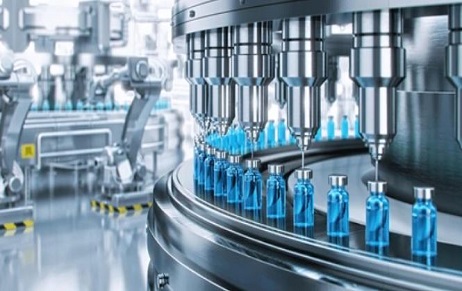INTRODUCTION: The Indian pharmaceutical companies are in a unique position where they are balancing the…
Patent Policy In Medical Terms | Understanding The Relationship Between Medical Procedures and Patent Policy
Understanding The Relationship Between Medical Procedures and Patent Policy In Medical Terms. For many years, medical processes and their patentability have been a source of debate. In practise, the patentability of medical processes has become increasingly important in the previous 40 years. According to legal experts in the United States, about 15 medical processes are patented per week. Medical specialists needed to be validated for inventing and innovating new techniques all of a sudden. A medical procedure patent was one that granted rights to simply procedural steps rather than the development of any medical devices. However, this tendency peaked and then quickly faded. Major medical institutions soon banded together to condemn the practise of issuing patents for medical operations as unjustified. As a result, more than 80 countries are wary of medical procedure patentability, whether surgical, diagnostic, or therapeutic, and some only allow patents on diagnostic models. It was interpreted as a threat to the dissemination of new procedural knowledge and information, as well as a violation of the philanthropic nature of medical professionals’ ethics.

[Image Source: gettyimages]
Issues pertaining to patenting of medical procedures/ techniques
‘Patenting of methods of medical treatment of human beings is a complicated issue for it is not only based on patent law but also on medical law.. The Hippocratic Oath is the foundation of medical legislation, and the purpose is to preserve human life. Patent law differs from medical law in that its objective is to foster innovation by paying inventors. As a result, there is a public policy issue that physicians must always be free in their treatment choices in order to provide the best possible health care. The blog clearly highlights the patent regime’s many facets, as well as the idea of exclusions for medical, surgical, and therapeutic treatments. Exclusion from patentability has far-reaching implications on socioeconomic, medical, ethical, and other levels. The issue becomes multidimensional when considering the exclusion of medical, diagnostic, and therapeutic methods from patentability. The TRIPS Agreement expressly mentions exceptions and exclusions in its terms; the goal to be reached is significant. However, the non-uniform execution of the TRIPS Agreement, as well as the lack of more stringent and tougher means of interpreting the TRIPS exclusion clause, has resulted in a slew of problems at the application and implementation levels. Detailed research on the benefits and drawbacks of patent exclusions, particularly for medical, diagnostic, and therapeutic approaches, haven’t gotten very far.
The concept of exempting medical, surgical, and therapeutic methods from patentability is based on human rights considerations. A person’s fundamental right to life must be accorded the highest priority. From the beginning, a person’s right to receive adequate and proper treatment becomes a fundamental human right of every human being. The purpose for the exclusion of medical methods from patentability is to ensure that patents do not obstruct or restrict doctors’ ability to perform their responsibilities to patients, which is critical for the medical profession and the general public. However, due to a misperception of the ideology underpinning such exclusivity from patentability, as well as a pro-capitalistic perspective, many industrialized countries have strayed from the well-defined path of patenting medical, diagnostic, and therapeutic technologies. The balance between the inventor’s right and the benefit to society appears to be in jeopardy. The principle of investor gain appears to obscure the humanitarian implications of patent exclusions.
The legal framework in India
By virtue of Section 3(i) of the Indian Patents Act, 1970, India excludes surgical, therapeutic, and diagnostic methods of treatment for humans and animals from the purview of patentable subject matter as a result of the TRIPS [Trade-Related Aspects of Intellectual Property Rights ] agreement. Previously, this included plants, but with the passage of The Patents (Amendment) Act, 2002, this was changed. The non-industrial application of medical procedures was one of the main grounds for their exclusion from patenting, which is an important criterion for patent review and issuance. A precise manner of providing drugs, diagnosing a medical ailment, or performing surgery are all examples of medical procedures. A stitch-free incision for cataract surgery, for example, cannot be copyrighted. Diagnostic procedures for exterior tissues or fluids, on the other hand, may be patentable. Furthermore, in the case of Lalit Mahajan’s [Patent Application No. 693/KOL/2007 decided on 11.01.2010 ] patent application relating to a ‘device for detection of antibodies to HIV and p24 antigen of HIV1 in human serum or plasma,’ the grey area between patentability of a device and diagnostic/therapeutic method was clarified. The opponents argued that because the apparatus in question lacked diagnostic features, it was not patentable under Section 3(i).The Patent Examiner recognized the inventive step, but pointed out that the invention was a device rather than a diagnostic technique. Similarly, the question in M/s. Applied Research Systems Ars Holding, Netherland [2003. ] was whether a ‘kit for the treatment of infertility for women having several dosages of FSH’21 may be excluded under Section 3(i) of the Act. Because the product was only being utilised as a medical procedure, the decision was affirmative. While the first application did not meet the method’s requirements for an industrial application, the second did.
Legal framework in U.S.A
Any process, machine, manufacture, or composition of matter is patentable if it is innovative and beneficial, according to the law. While inventors are free to obtain medical procedure patents, they are not given with any remedy in the event of infringement, as the law does not provide any particular exclusions. This means that, while they may have an autonomous monopoly, there is no way to enforce it. After a sequence of three cases – Ex parte Brinkerhoff, Ex parte Scherer, and lastly the Pallin case in 1992 – whether a patent on medical procedure could be claimed was clarified. The first two cases in the controversial Pallin case, in which a surgeon sued his colleagues for patent infringement of a cataract removal surgery method, were reversed by US courts. Following the first infringement case, the United States Supreme Court for the first time embraced a concept of exclusions from patentability of medical, surgical, and therapeutic processes, assuming a greater obligation to balance the equation of public health vs. social benefit.
Conclusion
Exclusions of medical operations, such as medicinal, surgical, and diagnostic methods, remain a difficult notion to grasp in the patentable arena. There are so many different interpretations and reasons for inclusion and exclusion that the subject matter causes more confusion than it answers. On the international front, it is past time for some clarity so that a unified position can be taken. Clearly, the arguments against incorporating medical processes in patentability outweigh the benefits, and most governments have already done so.The gaps must be filled by creating a model based on the TRIPS agreement and WMA [ full form] meetings, so that an effective mechanism can be established and member states may effectively balance public health and social benefit of inventors on an equal footing.
Author: Anuja Saraswat – a student of B.A.LL.B (Hons.) from NMIMS Kirit P. Mehta School of Law (Mumbai), in case of any queries please contact/write back to us via email [email protected] or contact us at IIPRD.
Related Article:
click here : Medical Equipment And Device Manufacturers.....
click here : Medical Devices: Compliances and Regulations in India.....



